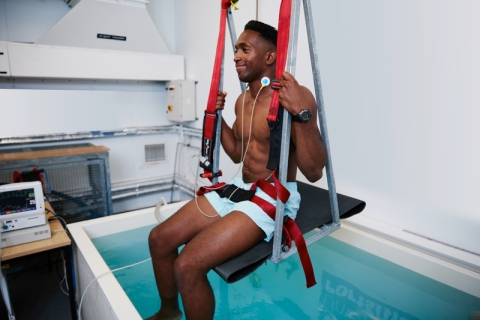
The amount of energy in Earth’s atmosphere is increasing at an alarming rate (1.6 Wm-2), and that rate has doubled in the last 14 years (Loeb et al., 2021). This energy is reflected in both an increase in average global temperatures, and more widely varying and severe weather patterns. Physiologists are working hard in many areas associated with the mitigation of, and adaption to, climate change.
One area that is sometimes overlooked is “occupational physiology”: this includes investigations of the impact of increased workplace heat stress on the risk to health and productivity of workers (Heat Shield, 2016). It also includes the response to the increasing number of extreme weather events. These include: hurricanes, wildfires, heat waves, cold snaps, drought and flooding. In these areas, the work undertaken by physiologists ranges from assessments of the habitability of bushfire shelters (Taylor and Haberley, 2015) to thermal monitoring and cooling strategies for firefighters (Notley et al., 2018; Fullag ar et al., 2021).
Flood risk
It is sometimes forgotten that extreme weather events not only put members of the general public at risk, they also place very significant demands on the emergency services. Flooding is a good example; floods are increasing in terms of frequency and intensity around the globe; they are likely to get worse with climate change (increased rainfall, river flows and higher coastal storm surges). Internationally, the percentage of the global population at risk from flooding has risen by almost a quarter since the year 2000. In England, in 2008, it was estimated that around 5.2 million properties (one in six) were at risk of flooding. More than 5 million people lived and worked in 2.4 million properties that were at risk of flooding from rivers or the sea, one million of which were also at risk of surface water flooding. A further 2.8 million properties were susceptible to surface water flooding alone (Ellis et al., 2021). Looking forward, flooding has been predicted to increase by an average of 15%-35% in the UK by 2080 (Environment Agency, 2009).
The health and safety of rescuers
These increases are putting ever greater demands on those responsible for flood rescue, and it is physiologists who are establishing the associated risks and recommending interventions. Until recently, little was known about the physiological demand placed on flood rescuers. To rectify this, we undertook a study (Tipton et al., 2019) that replicated a typical UK post-flood rescue scenario in representative “warm” and “cold” conditions. Flood rescue technicians undertook two conditions dressed in their normal protective PPE:
- “Cold”: standing for 60 mins in knee-height moving water (4.8 km h-1) at 7.7°C, with simulated rain, air temperature and wind speed of 4°C and 16 km h-1 respectively).
- “Warm”: six bouts of walking (2.16 km h-1 for 7 min) in knee-height moving water (3.2 km h-1) at 15.6 °C pulling and controlling the release of 10 kg (simulating rescue boat hauling), with 3 mins rest separating bouts of activity. Air temperature, wind speed and radiant heat load were 20°C, 0 km h-1 and 500 W m-2 respectively. A range of measures examined the metabolic, thermal and performance responses of technicians.
The results were illuminating. In the warm condition, following what was regarded at the time as acceptable working procedures, the first technician became exhausted in 10 mins and had an uncontrolled increase in deep body temperature, set to reach 40°C in 43 mins. Even when work demands were reduced to “minimum” levels, deep body temperature increased uncontrollably in half the technicians, average heart rates at the end of the simulated rescues were 87% of predicted maximum, oxygen consumption averaged 30 mL kg-1.min-1 and sweat losses were over 1 L h-1. These values are too high to be sustainable without mitigation. In the cold condition, foot temperatures cooled to levels where nonfreezing cold injury, a potentially life-changing condition (Golden et al., 2013), became a risk.
Improving work practices
This applied physiological study had widespread consequences in terms of: equipment design (PPE, wearable monitoring technology); working practices (technician numbers, shift allocations, work: rest schedules, hydration strategies, fitness standards, expectations). Such interventions should not only help flood rescue technicians fulfil their role effectively, they should also help the technicians avoid heat- and cold-related health problems. This is just one example of the importance of physiology research and its application for the health and safety of rescuers and the communities they serve.
Physiology to the rescue!'
This article was published in The Physiological Society’s magazine, Physiology News. Read the original article.
